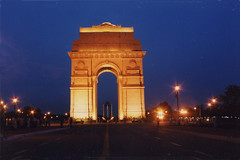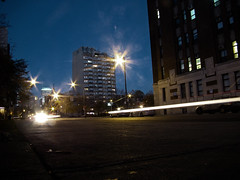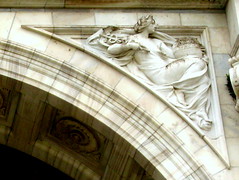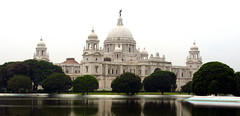Wrong my friend, wrong! This is the time to shoot some of the most remarkable shots of your life. Because, you are just in the Twilight zone. This the rare time of the day, when the street lights are on, and the sky is not altogether pitch black. Now the sky is indigo, and the buildings are golden with artificial light. Remember, 20-40 minutes past sunset, is the best, and possibly only time to shoot the violet-indigo sky.

For this you will need a tripod, to keep the camera rock-steady. Because, in the twilight photography, the exposures are long. If you use 100 ISO film, they can be as long as 4 seconds  with f/11 aperture. At this long an exposure, you can never hold the camera in your hand, you'll get shaky pictures. So, tripod is a must.
with f/11 aperture. At this long an exposure, you can never hold the camera in your hand, you'll get shaky pictures. So, tripod is a must.
The long exposure comes with some added benefits too. If you are shooting by the road, you will get light trails from cars passing by. Sometimes the lights look like streaks, sometimes they resemble comets. And if you are shooting by the sea? The waves will look like ghostly mist!
Cool Twilight tip: Try to get a low-angle shot. While positioning the camera, set it up at around one foot high from the ground. This low-angle will add to the drama of the shot.







